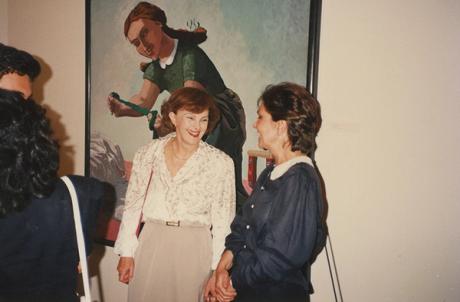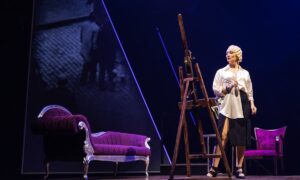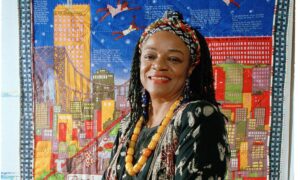
Look behind the curtain of any major artist career or movement of the 20th century and you will find a woman art dealer stage-managing publicity, exhibition design, sales and knowledge production in the form of catalogues, books, articles and events. Berthe Weill (1865-1951) with the School of Paris, Peggy Guggenheim (1898-1979) with Abstract Expressionism and Virginia Dwan (1931-2022) with Land Art and Minimalism are three examples out of hundreds more.In the past five years, commercial galleries and institutions have spearheaded research into this history by programming exhibitions (eg Edith Halpert and the Rise of American Art, Jewish Museum, New York, 2019-20) and symposia (eg Recovering Women’s Legacies, Frick Art Reference Library, 2021) that are making a noticeable dent in the armour of art market studies.Women Art Dealers is the first to examine the ways in which women have promoted contemporary (often avant-garde) art across locations and time periods from 1940 to 1990, with a focus on Europe, the US and South Africa. Chronological in approach, each of the 17 main chapters is a case study underscoring the impact of a dealer on their immediate locale and broader art history, from Simone Kahn Collinet’s support of Surrealism in Paris in the 1940s to Lia Rumma’s collaborations with Anselm Kiefer and Thomas Ruff in recent years.The cultural contribution of these dealers is the theme rather than collector competition, record auction prices and sales machinationsAccounts foreground the cultural contribution (rather than commercial speculation) of these dealers; an approach contrary to comparable publications on turn-of-the-century, male-led dealerships circulating Old Masters (eg Brill’s series Studies in the History of Collecting & Art Markets), where collector competition, record auction prices, taste formation and sales machinations are criteria for worthiness.This publication shares with its predecessors a focus on transatlantic collaboration and network-building between dealerships, as well as the mythos of the prescient, exceptional and individualist dealer. Given that gender (essentialism) is the organising framework, one might expect the study to push boundaries and subvert these aforementioned criteria. However, with the exception of Carlotta Castellani’s study of Mary Boone, there is infrequent analysis of the interrelationship between gender and art dealing, and nothing on the related roles of women in the arts as curators, writers, historians, teachers or secretaries etc.The how and the whyWomen Art Dealers is important for starting a conversation on how and why women were dedicated to promoting innovative art and artists, though a few setbacks occur. For instance, Véronique Chagnon-Burke, Elena Korowin and Doris Wintgens liberally reference and reinforce the ideological and gendered behemoth of the art “canon”, which, arguably, vis-à-vis feminism could be dismantled and questioned. Likewise, while the publication acknowledges that biographies and case studies are dominant modes in art market studies, the mode is never relinquished nor its problems probed (eg hagiography).The personal was political, too, for a range of women who used their professional status to counter oppressionThe breadth of activities of these dealers is beyond doubt; energetically explored and contextualised in digestible, informative chapters. The word “dealer”, as Sofia Ponte’s chapter on Etheline Rosas makes clear, can be obfuscatory, given that these individuals often performed a variety of functions in their careers. Rosas, as explained, was also a conservator, dealer and museologist. Particularly notable throughout are the ways in which these women historicised art in their publications, recordings, commissions, events and donations. Bertha Schaefer, for example, donated her collection to the University of Nebraska’s Sheldon Memorial Art Gallery. The personal was political, too, for a range of women who used their professional status to counter oppression. Federico Freschi and Lara Koseff’s chapter on the South African dealer Linda Givon explains that “Givon’s persistence to create a nonracial gallery was as a radical act of defiance; presenting solo exhibitions of Black artists gave their work a platform to be considered on its own terms”.By the end of Women Art Dealers, readers have followed a history of the professionalisation of the art dealer in the 20th century. Cultural capital and concern for formal innovation, rather than sales, drove these women to establish markets for their artists. Agnes Widlund’s 1961 statement, recounted by Christina Brandberg—“I hate all these little merchants without passion”—becomes a nostalgic counterpoint to the study on Boone, who unapologetically embraced merchant culture and exorbitant sales prices in the 1980s. Questions on gender, art and business practice remain, although this book is a strong start to addressing gender imbalance in an emerging field of art history; a peer at peers behind the curtain.• Women Art Dealers: Creating Markets for Modern Art, 1940-1990,by Véronique Chagnon-Burke and Caterina Toschi (eds). Bloomsbury Visual Arts, 272pp, 86 b&w illustrations, £90 (hb), published 11 January 2024


























